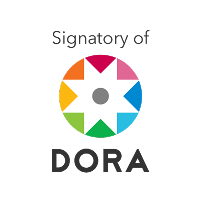Journal Metrics
This page provides information on peer review performance and citation metrics for Nature Human Behaviour. Our quick reference guide to journal metrics is also available for download.
 Nature Portfolio is a signatory of the San Francisco Declaration on Research Assessment (see here for more information about our endorsement). We believe that Impact Factor is just one of a number of metrics that can be used to evaluate a journal, and a small number of highly cited papers can have a disproportionate effect on the mean number of citations per paper.
Nature Portfolio is a signatory of the San Francisco Declaration on Research Assessment (see here for more information about our endorsement). We believe that Impact Factor is just one of a number of metrics that can be used to evaluate a journal, and a small number of highly cited papers can have a disproportionate effect on the mean number of citations per paper.
2023 Peer Review Metrics
Submission to first editorial decision: the median time (in days) from when a submission is received to when a first editorial decision about whether the paper was sent out for formal review or not is sent to the authors.
Submission to Accept: the median time (in days) from the submission date to the final editorial acceptance date.
Submission to first editorial decision - 12
Submission to Accept - 200
2022 Journal Metrics
On this page you will find a suite of citation-based metrics for Nature Human Behaviour. Brief definitions for each of the metrics used to measure the influence of our journals are included below the journal metrics. Data has been produced by Clarivate Analytics.
For recently launched journals, metrics are calculated from available citation data. If a metric uses multiple years of data, new journals may have partial metrics.
While the metrics presented here are not intended to be a definitive list, we hope that they will prove to be informative. The page is updated on an annual basis.
2-year Impact Factor - 29.9
5-year Impact Factor - 23.8
Immediacy index - 3.8
Eigenfactor® score - 0.05276
Article Influence Score - 10.5
2023 Usage Metrics
Article-level metrics are also available on each article page, allowing readers to track the reach of individual papers.
3,056,720 Downloads
63,601 Altmetric mentions
Definitions
2-year Impact Factor
The Journal Impact Factor is defined as all citations to the journal in the current JCR year to items published in the previous two years, divided by the total number of scholarly items (these comprise articles, reviews, and proceedings papers) published in the journal in the previous two years. (Courtesy of Clarivate Analytics)
5-year Impact Factor
The 5-year journal Impact Factor, available from 2007 onward, is the average number of times articles from the journal published in the past five years have been cited in the JCR year. It is calculated by dividing the number of citations in the JCR year by the total number of articles published in the five previous years. (Courtesy of Clarivate Analytics)
Immediacy index
The Immediacy Index is the average number of times an article is cited in the year it is published. The journal Immediacy Index indicates how quickly articles in a journal are cited. (Courtesy of Clarivate Analytics)
Eigenfactor® Score
The Eigenfactor Score calculation is based on the number of times articles from the journal published in the past five years have been cited in the JCR year, but it also considers which journals have contributed these citations so that highly cited journals will influence the network more than lesser cited journals. References from one article in a journal to another article from the same journal are removed, so that Eigenfactor Scores are not influenced by journal self-citation. (Courtesy of Clarivate Analytics)
Article Influence Score
The Article Influence Score determines the average influence of a journal's articles over the first five years after publication. It is calculated by multiplying the Eigenfactor Score by 0.01 and dividing by the number of articles in the journal, normalized as a fraction of all articles in all publications. This measure is roughly analogous to the 5-Year Journal Impact Factor in that it is a ratio of a journal's citation influence to the size of the journal's article contribution over a period of five years. (Courtesy of Clarivate Analytics)
Downloads
Downloads reflect the number of times full text or PDF versions of articles are accessed directly from the journal website. Downloads are defined as HTML, LookInside, PDF and Epub clicks. Please note that this does not include article downloads from mirror databases such as PubMed Central.
Altmetric mentions
Total number of mentions (e.g. Twitter, Facebook, Reddit, Blogs, News articles, Policy documents and Faculty of 1000 reviews) for articles published in the specified timeframe, as provided by Altmetric.
